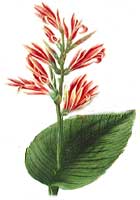skip to main |
skip to sidebar
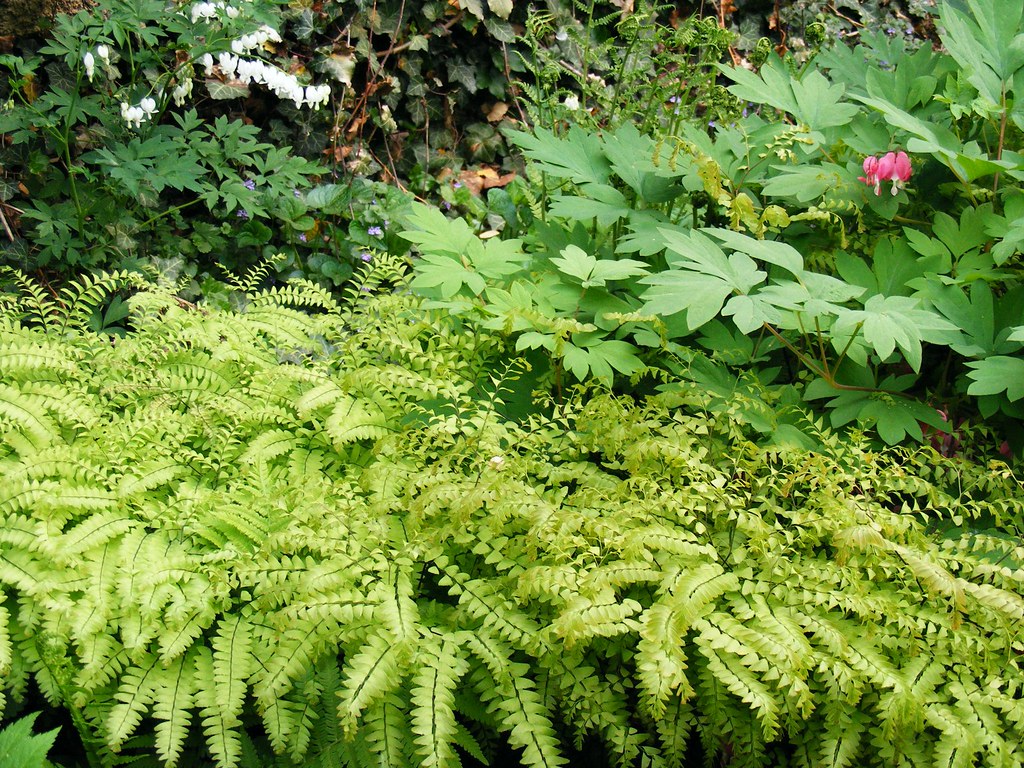
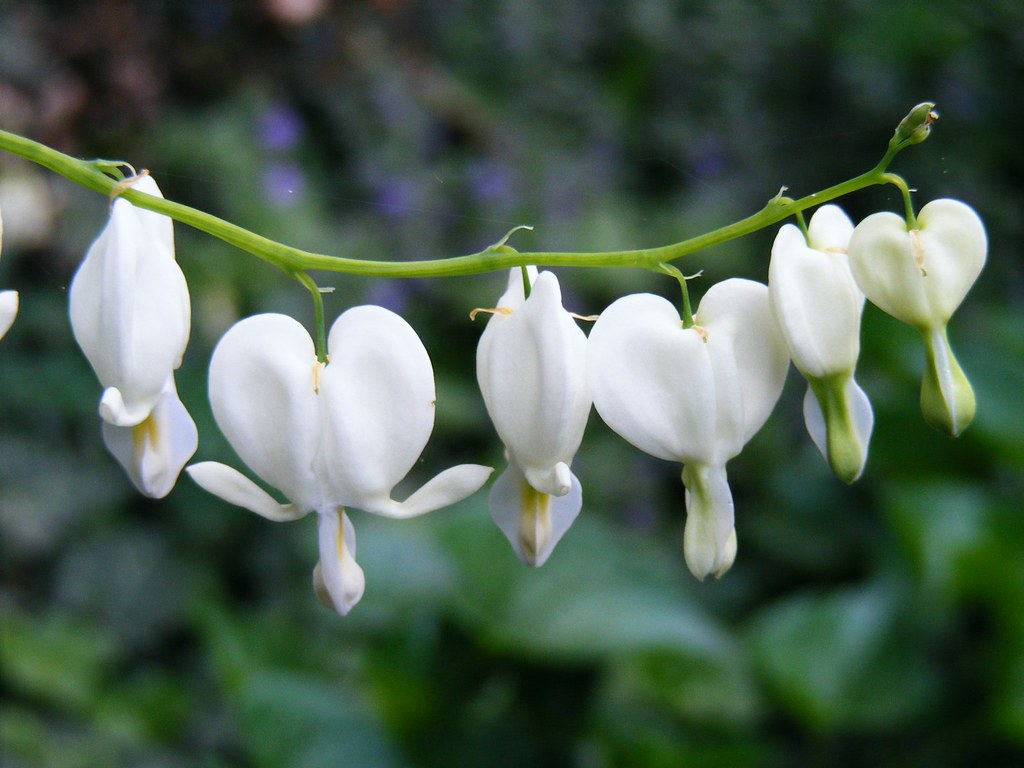 One more fernscape for a quietly spent Memorial Day ... It's a wider shot of the ferns and Dicentra we have in the middle space of the Woodland Garden, just behind the Hollies.
One more fernscape for a quietly spent Memorial Day ... It's a wider shot of the ferns and Dicentra we have in the middle space of the Woodland Garden, just behind the Hollies.
Though it was still pretty muddy today out in the garden, I did manage to spend a couple more hours working on the small bed next to the front steps. (The one with the primroses.) It has been in dire need of a good raking and weeding and general clean up before I could get serious about getting it planted for summer. So now, aside from re-placing the rocks at the front of the border, it's ready to get planting. In fact, my reward to myself today was planting one of the coleus we got over the weekend ... it's a really colourful one with lots of veining ... called "Peter's Wonder" if you happen to see it when out shopping. (For Iowa readers, it came from HyVee.)
This has always been a challenging little bed (about 3'x3') to achieve a measure of success and make it look really good. When we first moved here, there were a few perennials planted there: mainly a small Meadow Sage (Salvia nemerosa), some struggling small clumps of Bee Balm ... everything in it was basically struggling due to a thick overgrown mass of the dreaded 'Privet Lilies' that run rampant across the gardens and yards of just about everyone in our part of town. Well, as soon as I heard from a friend (who lives out in the country) that she was looking for a lot of daylilies to screen her a bit from a ditch, I was wheeling and dealing. (Because we can't get rid of these in the back either because they grow under the fenceline.) Here's where I landed: I proposed giving said friend all the daylilies she could haul or manage to plant (especially from this bed!), but politely suggested that should she ever want to thin her peonies out (I'd heard her mention this before), we'd sure be grateful to give them a new home. You see where this is going now ... a few weeks later at work she said she had peonies for us and had them in a box in her car. Deal sealed and two gardeners came out happy at the end. So the very first peonies we ever planted were Elaine's peonies, since they originally came from her. You'll be seeing them soon, when the peonies finally start blooming, and I'll point hers out.
Currently this little bed is undergoing yet another overhaul of sorts, though we've slowly been adding some more perennials over the past few years to see what would really take off, some Munstead Lavender, ferny red yarrow, an Artemisia 'Silver Mound' that ended up being one of last year's casualties due to the cold. But the real success story is the Primroses (see previous crowing on this subject) and now, apparently, the new Toad Lily I put in last year (a lovely purple one!) is quite happy in its new space as well. So currently, aside from a few snowdrops who are starting to naturalize and that rogue red tulip, that's pretty much the content of this little bed. The trellis is testimony to several past failures with clematis and (supposedly perennial) passion flower vines, but now we're just planting morning glories and Spanish Flag (Mina lobata) on it, which is much less worry and hassle.
So this is what I'm planting soon (probably tomorrow if it's not too rainy): I'm going to add another 'Silver Mound' where it once was doing quite well, I already planted one coleus and I think I'll add a few more. Then come the seeds ... Nasturtiums up front by the rocks, a small patch (on the sunnier, driveway side) of Balsam and a few Cerinthe seeds, just to see what comes of them this year. And, if I happen to find a new Toad Lily that wows me, I might put another of those in by the other one in the hope that they eventually colonize like some of our others have. Other than that, I plan to let this design go and do its thing (hopefully well!) ...
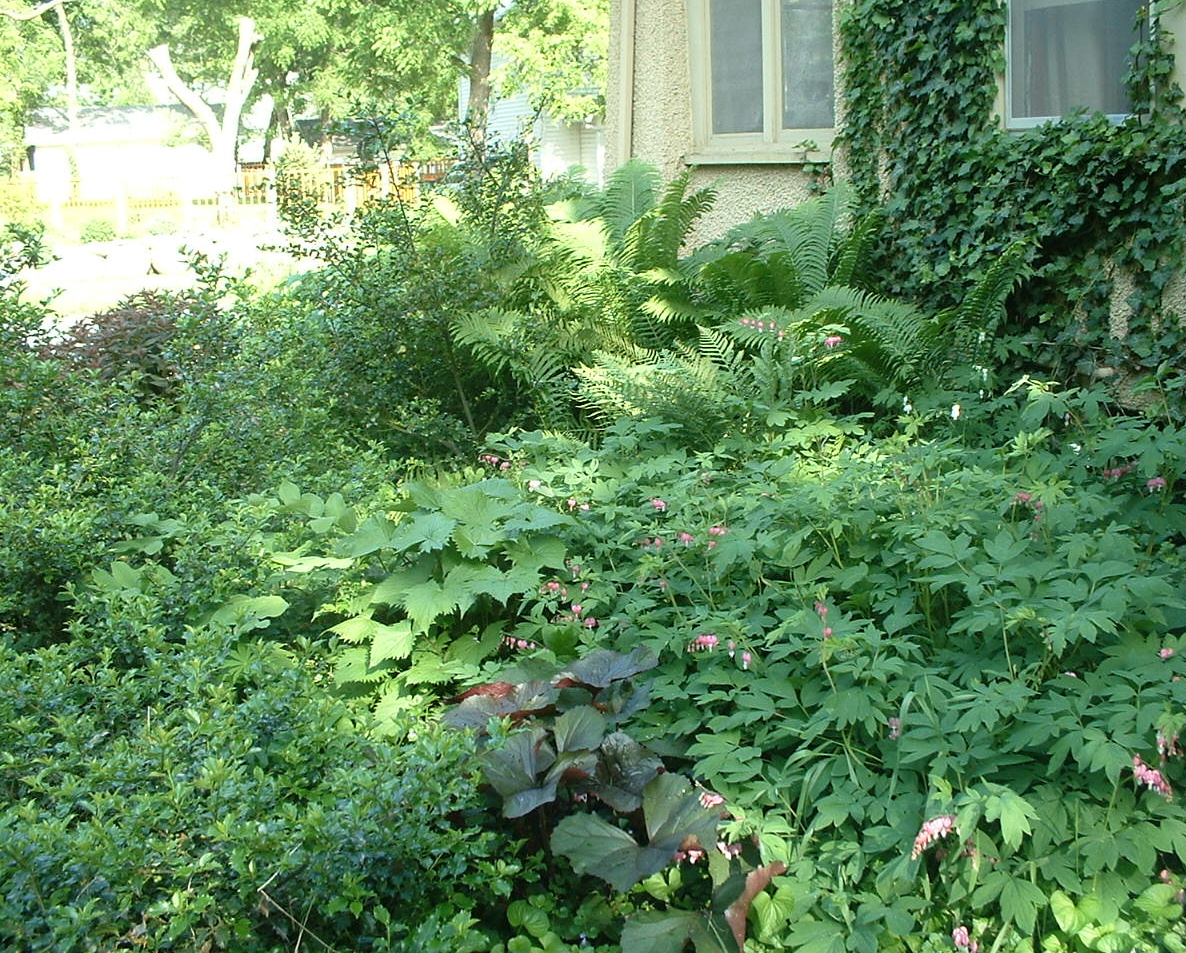 Continuing with our recent highlights of the Woodland Garden, I thought I'd put this wider shot up just to illustrate how lush and filled in it has become in the past two weeks. There's an amazing amount of growing going on here, and a discerning eye should be able to pick out at least six kinds of plants all sharing this same space. And that's not even counting the ivy which serves as a groundcover as well as climbing up the side of the house.
Continuing with our recent highlights of the Woodland Garden, I thought I'd put this wider shot up just to illustrate how lush and filled in it has become in the past two weeks. There's an amazing amount of growing going on here, and a discerning eye should be able to pick out at least six kinds of plants all sharing this same space. And that's not even counting the ivy which serves as a groundcover as well as climbing up the side of the house.
Though we're expanding and filling in more of the overall Woodland Garden, we don't plan on adding anything more to this particular area (which was the beginning of the whole space) because we're really happy with how everything has come together and formed a distinct garden area. We will be adding more to the right of this area (in the part where the Mystery Plant is), including a few new toad lilies, a Jack in the Pulpit, some Irish and Scottish moss and a few other shade lovers. We've already got several Hellebores planted over there and got a new one to include for this year's addition. We've got a lot of planting to happen soon around here, so we're going to be really busy getting the last of the clean up done, areas weeded, seeds planted and new plants installed.
Oh, and our lawnmower died on us, so time to go get a new one this weekend! So many garden tasks, so little time ....
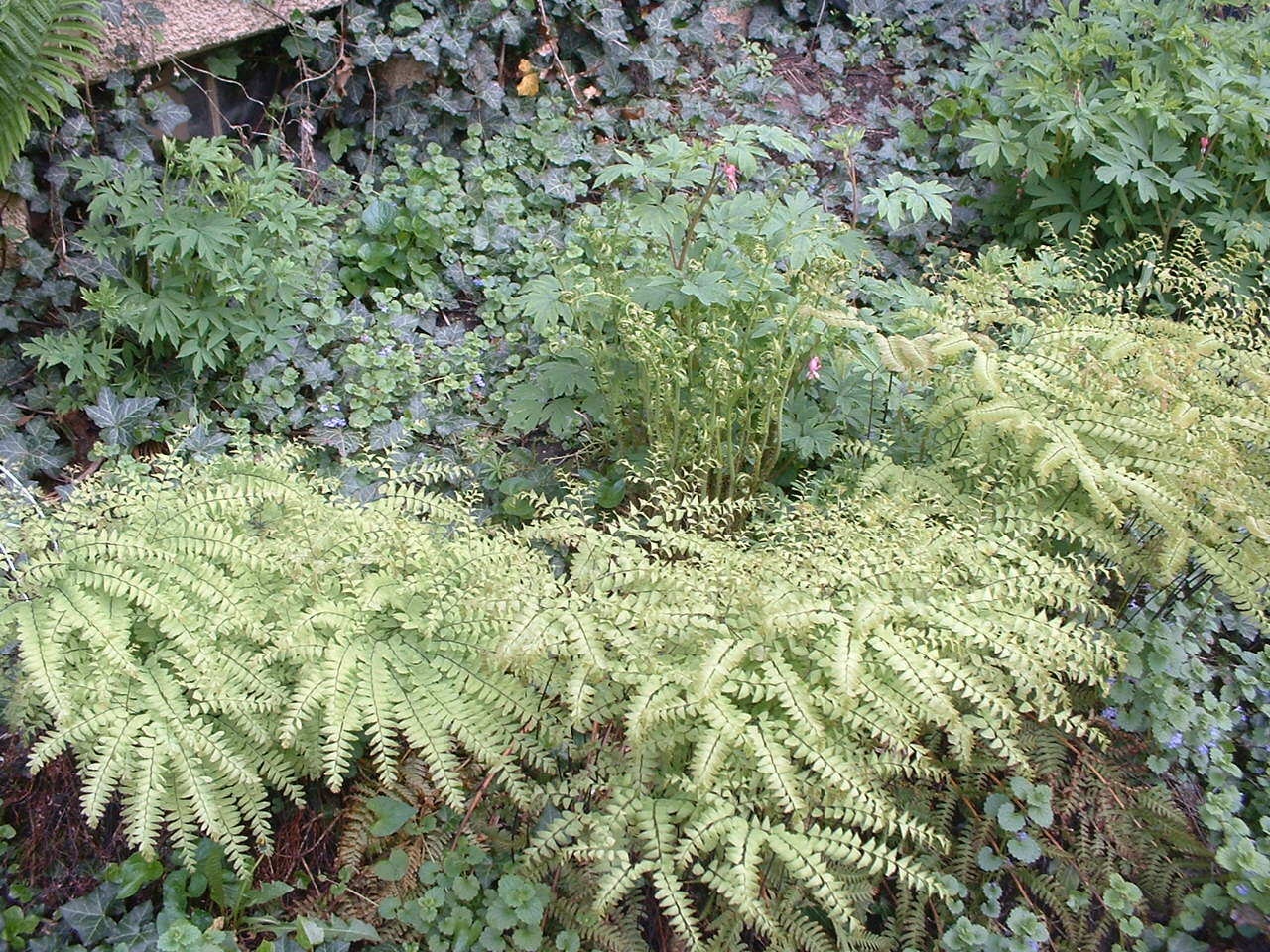 We're on a real fern kick around here lately, what with all the greenery shooting out of the ground in the woodland garden. So I thought I'd post a follow up on some of the ones I posted previously in their more emergent forms.
We're on a real fern kick around here lately, what with all the greenery shooting out of the ground in the woodland garden. So I thought I'd post a follow up on some of the ones I posted previously in their more emergent forms.
The most predominant species you see in this particular shot is the common woodland Maidenhair Fern (Adiantum pedatum) which is one of our favorites, due to its delicate architecture and unique growing habit. The fronds spread out fan-like, supported by a network of incredibly thin, yet sturdy stems, lifting it about a foot up from the garden floor. As long as they remain well watered throughout the hotter months, they just keep on going right up to frost, when they die back completely and disappear until the following spring. We've had these particular specimens in this location for about four or five years now, and they've really managed to spread out quite a bit in the intervening time. They're a great choice to mix in with other shade lovers, and ours share the space with Bleeding hearts, Ligularia, Holly, Ivy, Leatherwood ferns and a few stray Lupines. Like most ferns, they don't want a lot of direct sun during the course of the day, and do quite well where they are receiving morning and a bit of late afternoon sun. Of course, this part of the woodland garden stays pretty cool and moist most of the time (we do have to water in July and August though), which is pretty much all Maidenhairs require. For even more information on maidenhair ferns, here's the Wikipedia Entry.
Our second shot is of a Leatherwood fern -- previously seen as an emergent in my previous post. It has since unfurled even more than this photo reveals, but I really liked how the fiddles look all cork-screwy in this shot. 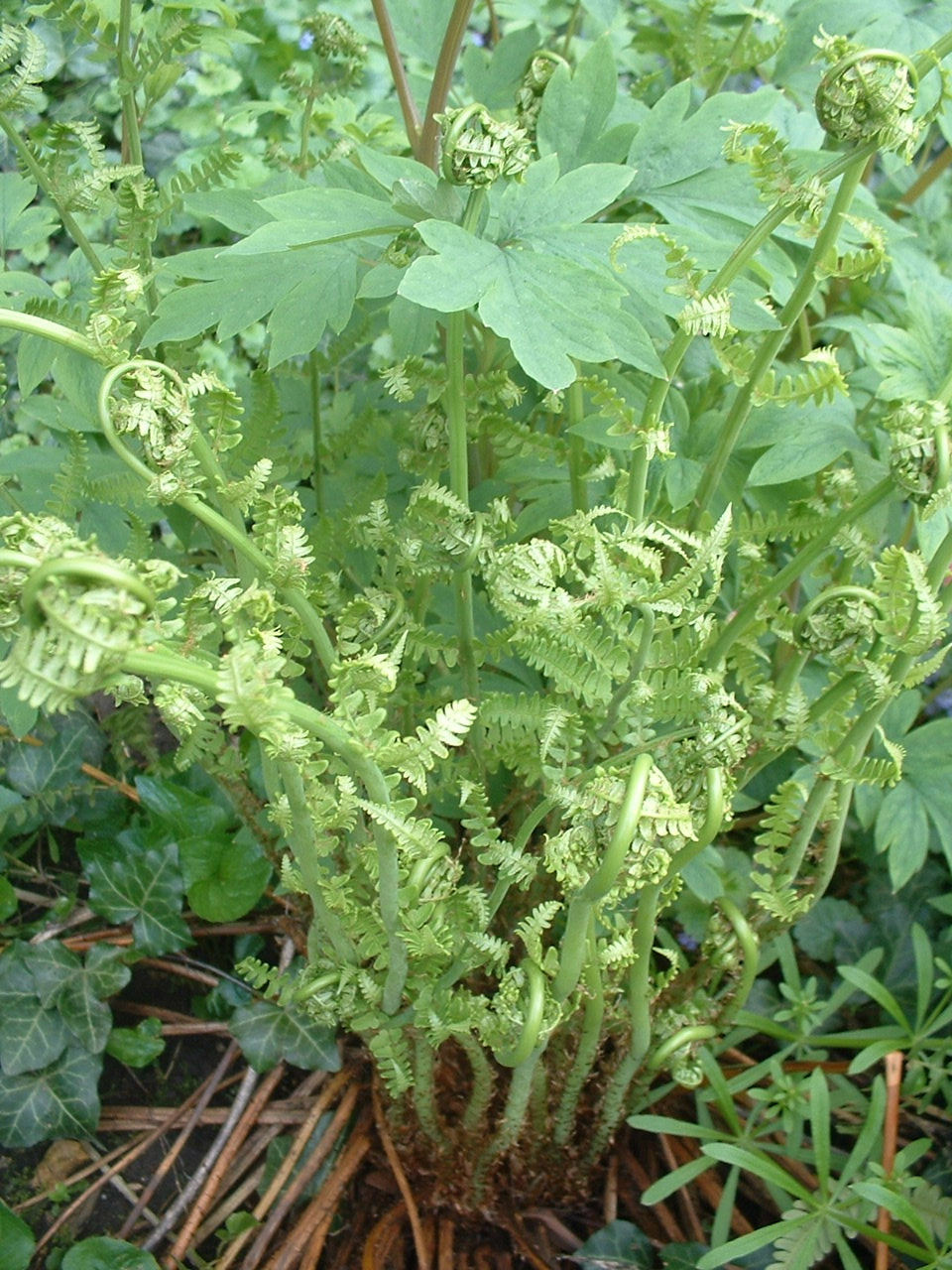
These are tough little guys, especially when they get all splayed out in their ferny glory, and definitely have earned their common name. With their tough fronds and woody stems, it's no wonder they're a stock item in many pricier floral arrangements. But as I said previously, there is no way they ever get cut from our garden ... that's just plain fern heresy! Leatherwoods can take more sun than most of the more delicate members of the family and in milder winters, they have even remained semi-evergreen. Once the ground really freezes though, they drop flat on the ground where they lie all winter until the center of the crown comes back to life in early spring. If you look at the base of the plant, you can still see the stems from last year ... we really don't bother to cut them back and they do just fine. Besides we like to allow them to gradually decompose back into where they came from, and the ground they do keep covered manages to fend off weeds ... always those nagging pests we can't keep up with in the garden!
Family Man commented the other day that he didn't normally think of ferns as particularly pretty plants (which of course shocked me, fern addict that I am), so I hope if I keep working on him a bit, I'll have won him over to the ferny side of the garden ....
There's been a lot of recent activity growing on in the Woodland garden on the north side of the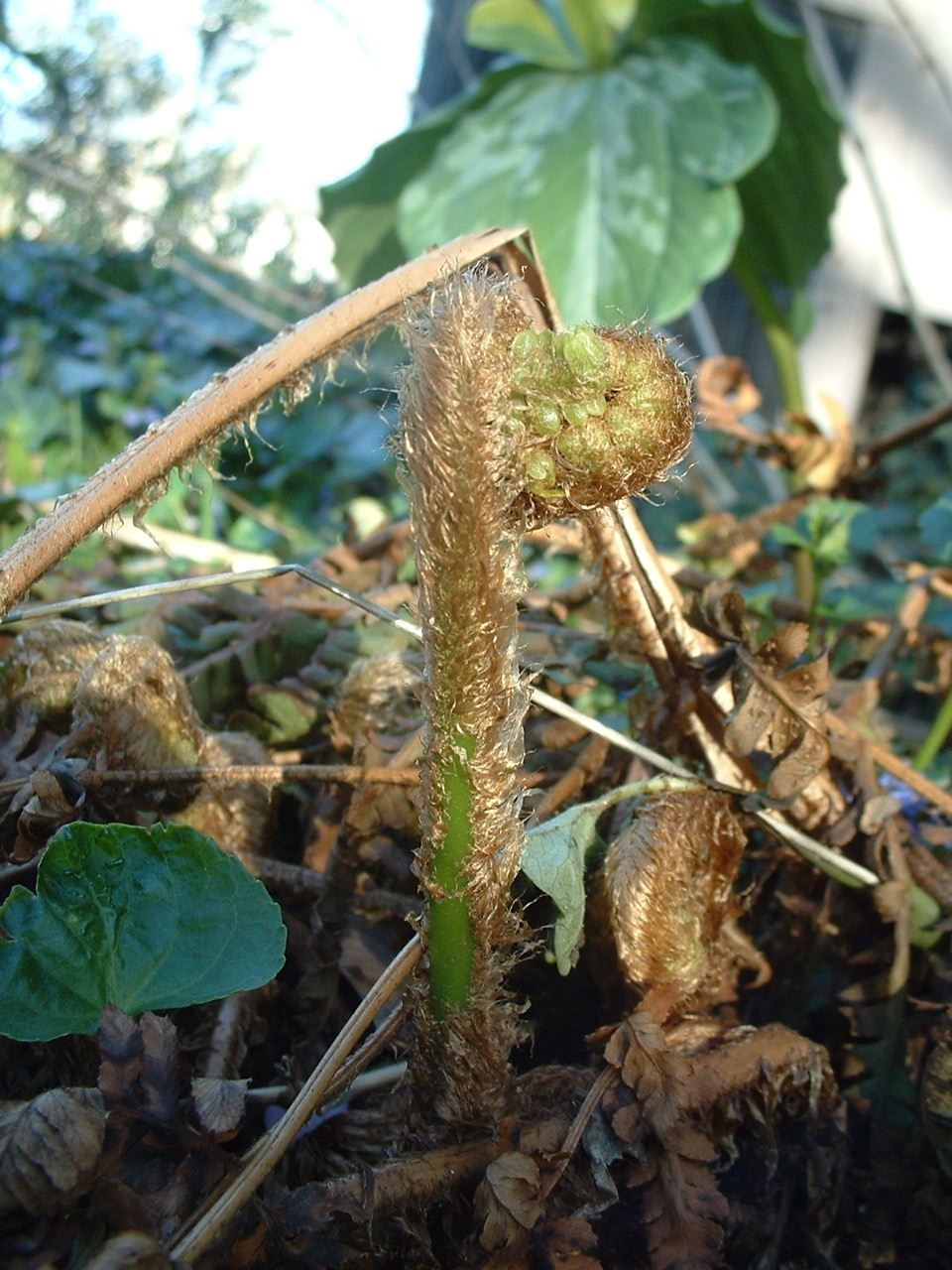 house in the past week or so ... warmer weather, followed by several days of significant spring rains and the ferns have just started bounding up from the ground. Though we have several varieties growing amongst the Bleeding Hearts, Hellebores, Ligularia, Heuchera and other shade lovers, I've chosen these two examples primarily because they've both been putting on quite the dramatic and enthusiastic re-emergence in recent days.
house in the past week or so ... warmer weather, followed by several days of significant spring rains and the ferns have just started bounding up from the ground. Though we have several varieties growing amongst the Bleeding Hearts, Hellebores, Ligularia, Heuchera and other shade lovers, I've chosen these two examples primarily because they've both been putting on quite the dramatic and enthusiastic re-emergence in recent days.
The first two shots are of the fiddleheads of the "Leatherwood" or "Marginal Woodfern" (Dryopteris marginalis), not only one of our favorites but also prized by florists who often incorporate the woody fronds in their arrangements. Luckily our specimens never meet this fate, and are allowed to pursue their natural habit of forming a relatively asymmetric clump of fronds over the course of the summer which then flattens out after a hard freeze in the fall. They do remain somewhat evergreen over the course of the winter, and even if they're not at their most attractive, they retain some of their green through even the coldest of months. The fiddleheads start emerging in early spring and quickly unfurl into the rich, dark green fronds they will retain until late fall or early winter. We have noticed that they do put on a lot of spores in late summer, though thus far, we've not seen them spread significantly ... even though we would be delighted to see that happen. Maybe over time (these specimens are about seven years old at this point) they will, but until that point we just continue to enjoy the distinct woodland touch they contribute to their neighbors in the cooler, damper shady spots they call home.
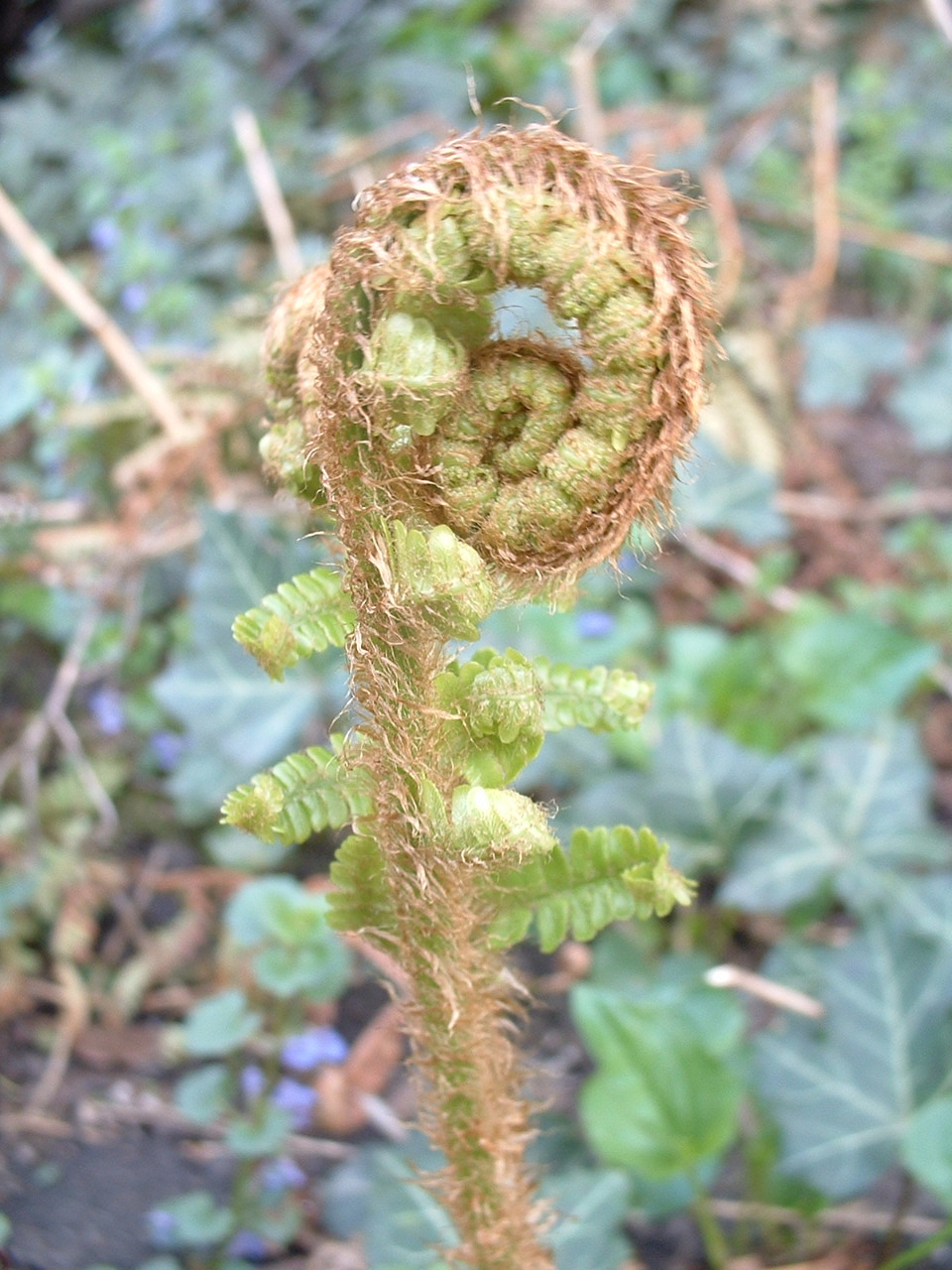 Our other specimen (third photo) is the rather common, though lovely, Ostrich Plume fern (Matteuccia struthiopteris), which has definitely ranked up there as one of my favorite ferns from my childhood. To my young imagination, these ferns just typified the sort of plant that would have abounded during the time of the dinosaurs ... I have fond memories of seeing them grow in older, well established flower beds near old houses. This seems to be one of those ferns that had a real vogue at a certain time, but has since fallen somewhat out of favor. Part of that could be (I theorize) because as ferns go, they are a bit invasive, and will colonize quickly and move outward from an area where they have already established themselves. We've already seen them take over their original space and multiply, but we're happy to just dig them up and re-plant them in other areas where we'd like them to take over.
Our other specimen (third photo) is the rather common, though lovely, Ostrich Plume fern (Matteuccia struthiopteris), which has definitely ranked up there as one of my favorite ferns from my childhood. To my young imagination, these ferns just typified the sort of plant that would have abounded during the time of the dinosaurs ... I have fond memories of seeing them grow in older, well established flower beds near old houses. This seems to be one of those ferns that had a real vogue at a certain time, but has since fallen somewhat out of favor. Part of that could be (I theorize) because as ferns go, they are a bit invasive, and will colonize quickly and move outward from an area where they have already established themselves. We've already seen them take over their original space and multiply, but we're happy to just dig them up and re-plant them in other areas where we'd like them to take over.
Ostrich plumes tend to thrive near the foundations of houses and don't mind deep shade, and as long at they get sufficient water during the drier months, they will reach heights of about four feet ove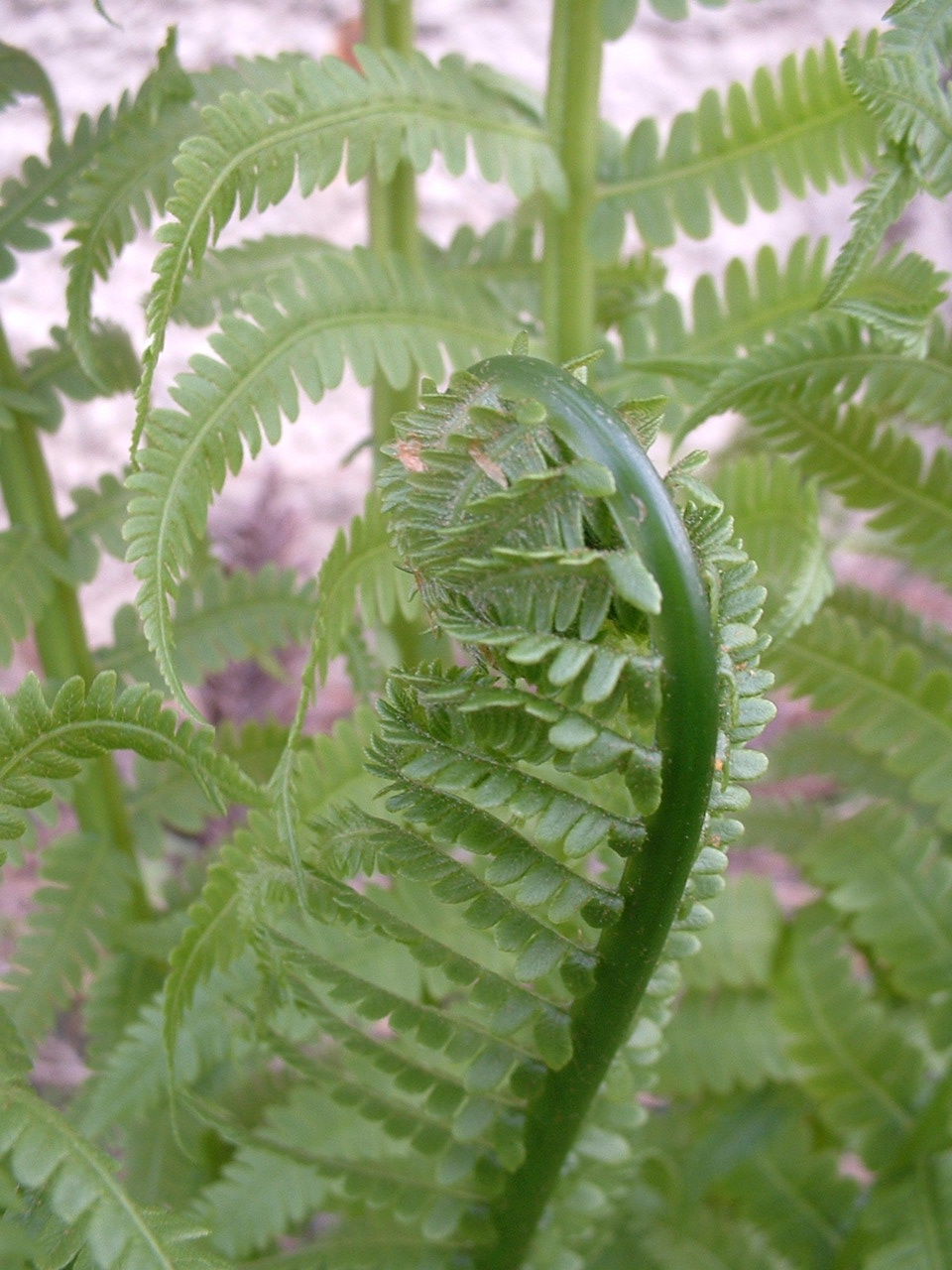 r the season. One thing I really appreciate about the Ostrich Plumes (along with their easy, generous nature) is the smell ... to my nose they just typify a clean, woodsy scent that evokes a woodland planting. And mixed in with their neighbors in our garden (Angelica and Lily of the Valley) they're right at home, providing their signature lush, jade like green all season long. There's a gardening sharing story behind our specimens ... we inherited these really plain, generic Hostas in the spot they occupy ... we didn't like them and wanted ferns there instead, so we traded the Hostas with a neighbor who had just acquired these ferns from a friend and hadn't found time to plant them. A more opportune trade could not have been made ... not only did we rid ourselves of the boring Hostas, we got a good starter supply of Ostrich Plumes that continues to thrive and multiply! In fact, I spotted a few renegades last night who will be moving to other spots this spring, so they can join their other compatriots in filling in those difficult shady spots! To my mind, they're a shade garden essential, and should they start to overrun their space, you're more than likely to find willing volunteers who will give the upstarts a new home ...
r the season. One thing I really appreciate about the Ostrich Plumes (along with their easy, generous nature) is the smell ... to my nose they just typify a clean, woodsy scent that evokes a woodland planting. And mixed in with their neighbors in our garden (Angelica and Lily of the Valley) they're right at home, providing their signature lush, jade like green all season long. There's a gardening sharing story behind our specimens ... we inherited these really plain, generic Hostas in the spot they occupy ... we didn't like them and wanted ferns there instead, so we traded the Hostas with a neighbor who had just acquired these ferns from a friend and hadn't found time to plant them. A more opportune trade could not have been made ... not only did we rid ourselves of the boring Hostas, we got a good starter supply of Ostrich Plumes that continues to thrive and multiply! In fact, I spotted a few renegades last night who will be moving to other spots this spring, so they can join their other compatriots in filling in those difficult shady spots! To my mind, they're a shade garden essential, and should they start to overrun their space, you're more than likely to find willing volunteers who will give the upstarts a new home ...
Guest photos courtesy of Fernymoss

 One more fernscape for a quietly spent Memorial Day ... It's a wider shot of the ferns and Dicentra we have in the middle space of the Woodland Garden, just behind the Hollies.
One more fernscape for a quietly spent Memorial Day ... It's a wider shot of the ferns and Dicentra we have in the middle space of the Woodland Garden, just behind the Hollies.







